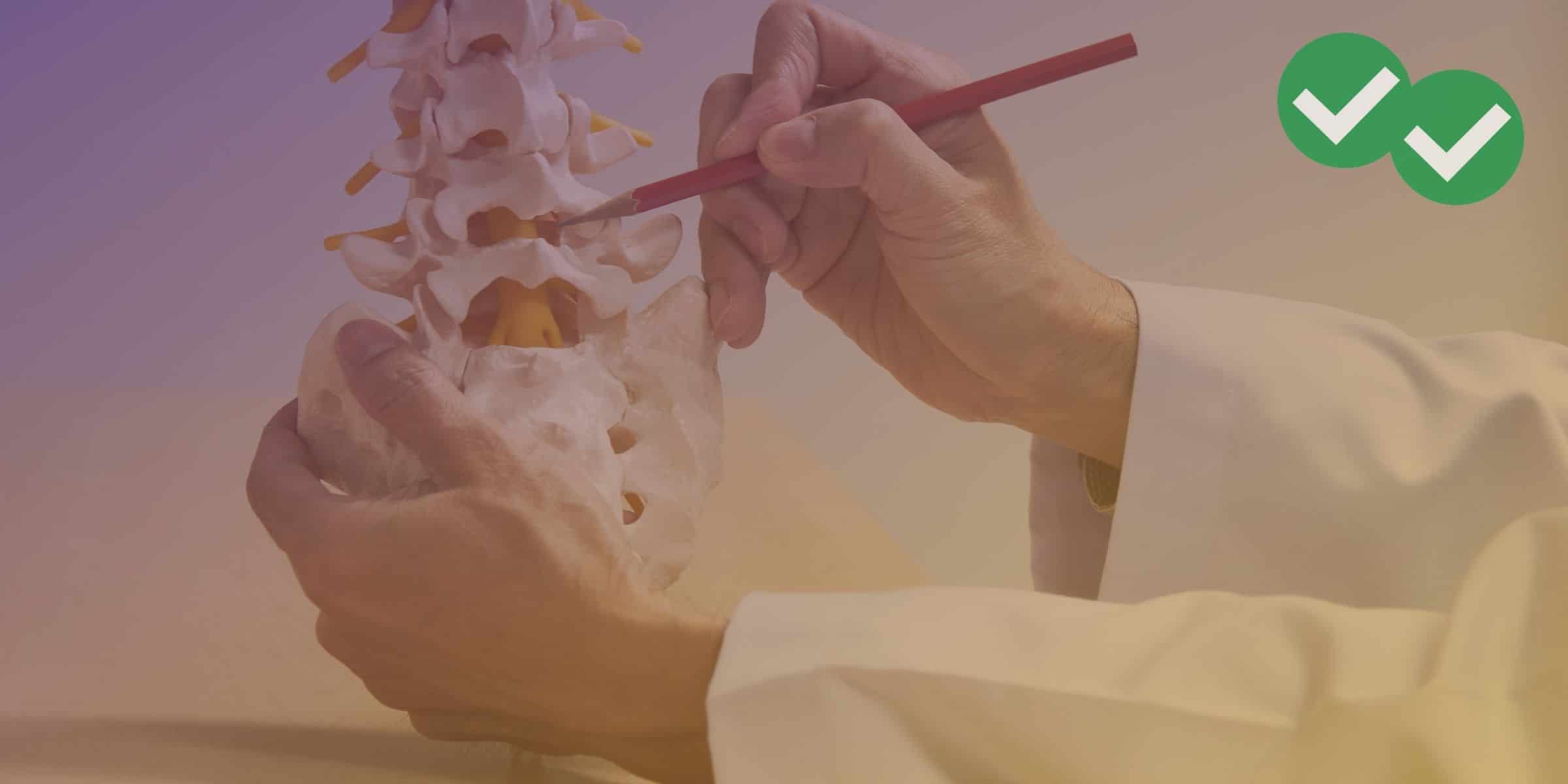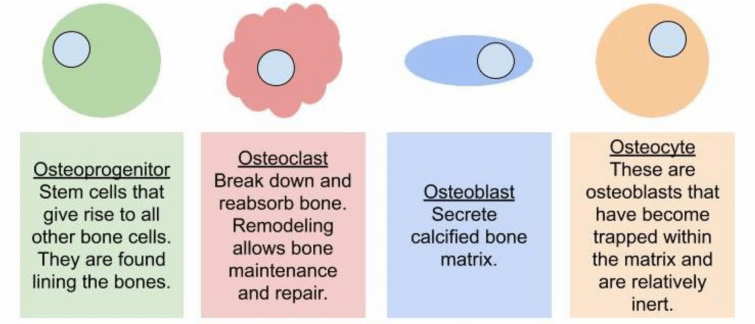
As you study for the Biological and Biochemical Foundations of Living Systems section of the MCAT, you will want to familiarize yourself with the musculoskeletal system and bone structure. Specifically, you should prepare for MCAT bone questions and MCAT cartilage questions, which involve understanding the major functions of bone and types of bones cells. Also, we encourage you to check out this guide to everything tested on the MCAT related to biology and biochemistry.
Below is a quick overview of some key things you should know. For an on-the-go PDF version of this content and more MCAT resources, click the link below!
Major Functions of Bone
Bones have four primary functions:

Types of Bone Cells
There are four types of bone cells you should know:
- Osteoprogenitor
- Osteoclast
- Osteoblast
- Osteocyte
Here’s a simple breakdown of their primary functions:

And here’s another helpful trick for remembering the difference between osteoclasts and osteoblasts specifically:
- OsteoClasts Crack bone
OsteoBlasts Build bone
MCAT Bone Types and Joint Types
Bone Types
There are four major types of bones, as noted with examples below:
| Bone Type | Example |
|---|---|
| Long | Femur |
| Short | Carpel bones |
| Flat | Frontal |
| Irregular | Vertebrate |
Joint Types
There are three major types of joints, as noted with examples below:
| Joint Type | Definition | Example |
|---|---|---|
| Fibrous | Immovable joint; bones are connected by fibrous connective tissue | Skull |
| Cartilaginous | Allows very little movement; bones are connected by cartilage | Vertebrate and pubic bone |
| Synovial | Mobile joint with fluid-filled space between bone | Shoulder, hip, elbow, knee |
A Final Word on MCAT Bone, Cartilage, and Joint Content
When breaking down the parts of the musculoskeletal system, it’s important to understand the difference between bone and cartilage. Cartilage is a lightweight flexible tissue that serves a structural function and absorbs shock in joints. It is avascular, which is why damaged cartilage is slow to heal relative to bone.
Additionally, the epiphyseal (growth) plate is a type of cartilage: a thin layer of cartilage within bones that allows longitudinal growth during development. It is ossified after bones reach their final length.
Want more MCAT practice? Check out Magoosh’s MCAT prep, which includes 380 lessons, 745+ practice questions, personalized email assistance, and more!
Happy studying and good luck!






Leave a Reply